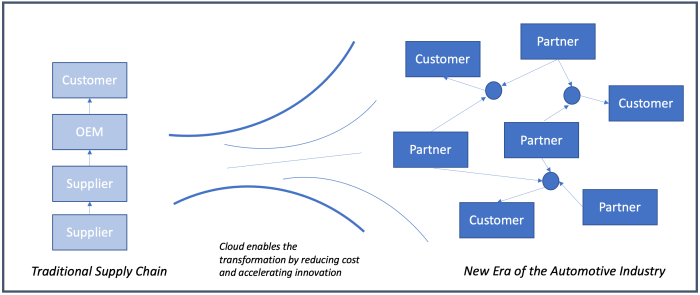What to know about hidden fees that increase the price of everything? It’s a crucial question in today’s market, where seemingly straightforward purchases can be riddled with extra charges. From tiny line items in contracts to unexpected surprises at checkout, these hidden fees can significantly impact your wallet. This article delves into the world of hidden fees, exploring how they work, how to spot them, and what you can do to protect yourself.
Understanding how hidden fees contribute to the overall cost of goods and services is essential for informed decision-making. We’ll examine common examples in various sectors, from banking to travel, highlighting the deceptive tactics employed by some businesses. Learn to identify red flags and scrutinize fine print to avoid costly surprises.
Introduction to Hidden Fees
Hidden fees are charges tacked onto the price of goods or services that are not readily apparent or are intentionally obscured, making the total cost deceptively high. They exploit the consumer’s tendency to focus on the advertised price, overlooking the additional costs that inflate the final price. This deceptive nature often leads to unexpected expenses, and the consumer is often unaware of the true cost until they have already made a purchase or committed to a service.Hidden fees contribute significantly to the overall cost of goods and services, impacting both individual consumers and the economy as a whole.
They can erode consumer trust and lead to a perception of unfair pricing practices. This can negatively impact businesses’ reputation and market share, especially when transparent pricing is a growing consumer expectation. Businesses employing these tactics often use complex or ambiguous language in contracts and terms and conditions to mask the hidden costs.
Methods of Implementing Hidden Fees
Businesses employ various strategies to incorporate hidden fees, often using convoluted language or burying the charges deep within lengthy contracts. These methods can include adding surcharges for specific services, implementing penalties for early termination or cancellation, or applying hidden taxes or fees that are not clearly detailed. The lack of transparency and clear communication around these charges is a key factor in their effectiveness.
Examples of Hidden Fees Across Sectors
Understanding how hidden fees manifest across different sectors provides a clearer picture of their prevalence and impact.
| Sector | Type of Hidden Fee | Example |
|---|---|---|
| Banking | Account maintenance fees | Small monthly charges for maintaining a checking or savings account, especially if the account balance falls below a certain threshold. |
| Banking | Overdraft fees | Charges applied when you withdraw more money than you have in your account. |
| Travel | Hidden baggage fees | Fees for checked baggage that are not always included in the initial flight price. Sometimes, airlines charge extra fees for exceeding a certain weight limit for baggage. |
| Travel | Booking or cancellation fees | Fees for changing or canceling travel plans. |
| Utilities | Late payment fees | Penalties applied if utility bills are not paid on time. |
| Utilities | Connection or disconnection fees | Additional charges for connecting or disconnecting utility services. |
| Restaurants | Delivery fees | Additional costs for delivery of food, even if the restaurant advertises a specific price for the food itself. |
| Restaurants | Service charges | Charges for service that are sometimes added without explicit disclosure. |
Identifying Hidden Fees
Unveiling the often-camouflaged costs lurking behind seemingly attractive deals is crucial for informed financial decisions. Hidden fees, disguised in convoluted language or buried within lengthy contracts, can significantly inflate the final price tag, ultimately diminishing the value of a purchase or service. Understanding how to identify these hidden costs is essential for protecting your financial well-being.Knowing how to spot these often-disguised charges is vital to avoiding costly surprises.
Whether you’re signing a lease, purchasing a product, or subscribing to a service, proactive scrutiny of the terms and conditions is paramount. By developing a keen eye for the subtle indicators of hidden fees, you can make more calculated choices and ensure that you’re getting the best possible value for your money.
Common Examples of Hidden Fees
Hidden fees manifest in diverse forms across various transactions. Subscription services often include mandatory add-on fees, such as premium features or extended support, that weren’t initially apparent. Retail purchases might include hidden taxes, shipping surcharges, or restocking fees. Financial services like loans or credit cards may feature hidden interest rates or penalties for early repayment. Understanding these diverse examples is crucial for informed decision-making.
Spotting Hidden Fees in Contracts and Agreements
Contracts and agreements are often dense with legalese, making it challenging to identify hidden fees. Pay close attention to clauses related to penalties, additional charges, and fees for services beyond the initial agreement. Look for terms like “administrative fees,” “processing charges,” or “late payment penalties.” Reviewing the fine print is essential to uncover these potential costs. Carefully read all clauses, particularly those related to additional services, extended warranties, or optional extras.
Don’t hesitate to ask clarifying questions if any aspect of the contract is unclear.
Scrutinizing Price Quotes and Terms and Conditions
Price quotes, often presented as attractive initial figures, frequently mask hidden fees. Delve into the details of the quote to uncover any potential add-ons. Examine the terms and conditions meticulously, focusing on sections that describe potential charges beyond the stated price. Be particularly cautious of vague language or overly complex phrasing, which may obscure hidden fees. If the quote or contract lacks transparency, question its validity and seek alternative options.
Key Red Flags to Watch Out For
| Category | Red Flag | Explanation |
|---|---|---|
| Pricing Structure | Vague or unclear pricing | Lack of specifics regarding charges can hide additional costs. |
| Contract Language | Complex or technical jargon | Confusing language might mask hidden fees or penalties. |
| Fine Print | Lengthy or detailed clauses | Extensive contracts often contain clauses that specify hidden fees. |
| Additional Charges | Hidden fees buried in the text | Look for unexpected costs that are not clearly Artikeld. |
| Optional Extras | Aggressive upselling of add-ons | Sales tactics designed to increase the total cost. |
Impact on Consumers
Hidden fees, often buried deep within the fine print or presented in confusing language, have a significant impact on consumer budgets and financial well-being. These seemingly small charges can add up quickly, creating a substantial financial burden that affects various aspects of a consumer’s life. The consequences of ignoring these hidden fees can range from minor inconveniences to significant financial distress.
Budgetary Strain
Understanding the cumulative effect of hidden fees is crucial for consumers. Small, seemingly insignificant charges, when multiplied across multiple services or purchases, can dramatically impact a household budget. For example, a monthly subscription service with a seemingly low monthly fee might have a hidden annual renewal fee that significantly increases the overall cost. This can lead to unexpected shortfalls in savings, impacting financial goals and potentially leading to debt accumulation.
Furthermore, unexpected charges can disrupt pre-planned financial strategies.
Varied Consumer Experiences
Consumers experience hidden fees differently, depending on their financial situation and awareness level. Those with limited financial resources are disproportionately affected by these fees. A small hidden fee might represent a significant portion of their budget, potentially leading to difficulty in meeting basic needs. On the other hand, wealthier consumers might perceive the same hidden fee as less impactful, but even they can experience negative consequences from these fees, potentially leading to missed opportunities or a less positive overall experience.
For instance, a consumer who is unaware of a hidden service fee might end up with a larger bill than expected, causing a negative impact on their budget.
Consequences of Ignoring Hidden Fees
Ignoring hidden fees can lead to a range of negative consequences. Unexpectedly high bills can lead to financial stress and anxiety. Missed savings goals, decreased financial security, and difficulties in meeting essential needs are also potential consequences. In some cases, the financial burden of hidden fees can contribute to a cycle of debt. Understanding the potential consequences of ignoring hidden fees is crucial for making informed decisions and safeguarding financial well-being.
Importance of Awareness
Consumers should prioritize being aware of hidden fees. This awareness allows them to make informed decisions about purchases and services. By carefully reviewing all terms and conditions, and asking questions about any unclear charges, consumers can avoid potential financial pitfalls. This practice helps to prevent unwelcome surprises and allows for better financial planning. Furthermore, a proactive approach to seeking transparency and clarity regarding fees leads to greater control over personal finances.
Financial Burden by Demographic
| Demographic | Potential Financial Burden (Estimated) | Explanation |
|---|---|---|
| Low-income households | Significant portion of disposable income | Hidden fees can represent a large percentage of their limited budget, impacting basic necessities. |
| Middle-income households | Moderate impact on savings and future goals | Hidden fees can erode savings and potentially delay achieving financial objectives. |
| High-income households | Less significant, but still impactful | While not drastically affecting their overall financial situation, hidden fees can still lead to missed opportunities or less positive experiences. |
“Hidden fees can significantly impact consumers, regardless of their income level.”
Legal and Ethical Considerations
Hidden fees, though often subtle, can have significant legal and ethical ramifications. Businesses employing deceptive pricing strategies face potential penalties, and consumers have rights that need to be protected. This section delves into the legal implications, ethical concerns, and the role of consumer protection agencies in safeguarding against these practices.
Legal Implications of Hidden Fees
Various jurisdictions have laws designed to protect consumers from unfair pricing practices. These laws often prohibit businesses from charging fees that are not clearly disclosed or that are significantly higher than expected. The specifics of these laws differ, reflecting the unique contexts and priorities of each legal system. For example, some regulations focus on transparency in disclosing all charges, while others may concentrate on preventing predatory pricing schemes.
Understanding these nuances is crucial for both businesses and consumers.
Examples of Penalties for Deceptive Pricing
Several instances exist where businesses have been penalized for deceptive pricing practices. These penalties can range from fines to court orders requiring businesses to adjust their pricing models or provide refunds to affected customers. For example, in the US, companies have faced lawsuits for failing to disclose hidden fees associated with financial products, leading to substantial settlements. Similarly, in Europe, companies have been penalized for unclear or misleading information about product pricing, impacting their consumer trust and brand reputation.
Ethical Implications of Using Hidden Fees
Using hidden fees to increase prices raises significant ethical concerns. The core issue is the lack of transparency and fairness in the transaction. Consumers are not given the opportunity to make informed decisions about the total cost of a product or service, which can be particularly problematic for vulnerable consumers. Moreover, the practice can erode consumer trust and damage the reputation of the business.
This ethical breach often stems from prioritizing profit over transparency and consumer welfare.
Role of Consumer Protection Agencies
Consumer protection agencies play a crucial role in addressing hidden fees. These agencies investigate complaints, conduct audits, and issue guidance to businesses regarding fair pricing practices. They often collaborate with law enforcement to enforce relevant regulations. Furthermore, they educate consumers about their rights and provide resources to help them identify and challenge hidden fees. These agencies are essential in maintaining market integrity and protecting consumer interests.
Legal Frameworks for Consumer Protection
| Jurisdiction | Key Legal Framework | Specific Focus |
|---|---|---|
| United States | Federal Trade Commission Act (FTC Act) | Enforces truth in advertising and prohibits deceptive pricing practices. |
| European Union | Directive on Consumer Rights | Requires clear and comprehensive information about the price of goods and services. |
| United Kingdom | Consumer Rights Act 2015 | Guarantees consumers a right to clear and understandable information about goods and services, including all costs. |
| Australia | Australian Consumer Law | Artikels consumer rights and prohibits misleading or deceptive conduct, including pricing practices. |
This table provides a brief overview of legal frameworks for consumer protection against hidden fees. It highlights the diversity of approaches across different jurisdictions, emphasizing the importance of understanding local regulations.
Strategies for Avoiding Hidden Fees

Hidden fees are a pervasive problem, impacting consumers across various sectors. Understanding how these fees are often concealed within contracts and service agreements is crucial for safeguarding your financial well-being. This section provides actionable strategies for navigating the world of hidden fees and protecting yourself from unexpected financial burdens.
Reviewing Contracts Carefully
Thorough contract review is essential to avoid hidden fees. Carefully scrutinize every clause, including terms related to service fees, late payment penalties, cancellation policies, and any additional charges. Look for vague language or terms that could potentially lead to unexpected costs. Understanding the language of the contract is paramount to preventing future disputes.
- Pay close attention to fine print and supplementary documents.
- Ask questions about anything unclear or ambiguous.
- Request clarification on potential hidden fees.
- Have a legal professional review the contract if necessary, particularly for complex agreements.
Negotiating Prices and Avoiding Hidden Fees in Contracts
Negotiation is a powerful tool in avoiding hidden fees. Don’t hesitate to negotiate the price or terms of a contract, especially when dealing with services or products with multiple potential hidden charges. Clearly articulate your concerns about hidden fees and propose alternative arrangements that ensure transparency and fair pricing.
- Clearly state your concerns regarding hidden fees in writing.
- Present alternative agreements that ensure transparency and fairness.
- Be prepared to walk away from a deal if the terms are not favorable.
- Use comparison shopping tools to evaluate prices and services from multiple providers.
Comparing Prices and Services Across Different Providers
Comparing prices and services across different providers is a critical step in avoiding hidden fees. Utilize comparison websites or tools to evaluate the costs and features offered by various providers. Pay attention not just to the advertised price, but also to the full range of fees and charges associated with each option.
- Use comparison websites to evaluate multiple providers.
- Look beyond the advertised price to see the full cost of service.
- Factor in long-term costs, including potential renewal fees.
- Compare service packages to identify the most suitable option.
Effective Strategies for Avoiding Hidden Fees
This table summarizes practical strategies for consumers to avoid hidden fees.
| Strategy | Actionable Steps |
|---|---|
| Thorough Contract Review | Carefully read all terms, fine print, and supplementary documents. Ask questions about unclear or ambiguous clauses. Seek professional legal advice if needed. |
| Negotiation | Clearly state concerns about hidden fees. Present alternative agreements. Be prepared to walk away if terms are unfavorable. |
| Comparison Shopping | Utilize comparison websites or tools. Evaluate costs and features of multiple providers. Factor in long-term costs and renewal fees. |
| Seek Transparency | Request clarification on potential hidden fees. Insist on clear and detailed pricing. |
The Impact on Different Industries: What To Know About Hidden Fees That Increase The Price Of Everything
Hidden fees, often buried deep within fine print or shrouded in complex language, aren’t a uniform phenomenon. Their prevalence and impact vary significantly across industries, shaping consumer experiences and economic landscapes in unique ways. Understanding these variations is crucial to navigating the marketplace effectively and holding businesses accountable.
Hidden fees are sneaky little devils that silently inflate the price of everything, from groceries to plane tickets. Understanding how these fees sneak into the final price is crucial for savvy consumers. For instance, a recent survey on public opinion regarding CRISPR gene editing, like this one , highlights complex ethical considerations that can impact the price of future technologies and treatments.
Ultimately, being aware of these often-overlooked costs is key to making informed decisions and avoiding financial surprises.
Airline Industry
The airline industry is notorious for its intricate network of hidden fees. From baggage fees to seat selection charges, change fees, and even in-flight meal surcharges, travelers often find themselves facing unexpected costs that can significantly inflate the overall price of a ticket. This strategy is frequently employed to maximize profit margins and offset the costs of fuel and other operational expenses.
Hidden fees are sneaky little culprits that silently inflate the cost of everything, from groceries to gadgets. They’re often buried in fine print or listed as obscure add-ons. Luckily, you can often avoid these extra charges by being proactive and doing your research. For example, check out this awesome height adjustable tablet stand for just 11, a great deal that doesn’t hide any extra fees! grab this height adjustable tablet stand for just 11 But remember, even with great deals, it’s still wise to always look out for those hidden costs.
These additional fees, often presented in a confusing and overwhelming manner, can create a considerable financial burden on consumers, especially for those traveling on budget airlines or with large families.
Telecommunications
The telecommunications sector also harbors a variety of hidden fees, often associated with data overages, international calling, or premium services. These fees can be easily overlooked by consumers, leading to unexpected charges on their monthly bills. Furthermore, the complexity of data plans and varying service packages can obscure the actual cost of communication. The prevalence of hidden fees in telecommunications can impact affordability and potentially limit access to vital communication services, particularly for low-income households.
Finance Industry
Hidden fees in the finance sector encompass a broad range of charges, from account maintenance fees to early withdrawal penalties on savings accounts. Furthermore, loan origination fees, prepayment penalties, and late payment charges can contribute to the overall cost of borrowing money. These fees can significantly impact consumers, particularly those who are unaware of the charges. They can lead to financial stress and potentially exacerbate existing financial challenges, especially for vulnerable populations.
Retail Industry
While not always explicitly “hidden,” the retail industry sometimes employs practices that inflate the cost of goods. Hidden fees can manifest as shipping and handling charges, restocking fees, or processing fees for returns. These charges are often not clearly displayed upfront, leading to consumers paying more than anticipated. The consequences for consumers include higher prices and potentially less attractive deals, impacting their purchasing decisions.
The impact on retailers might involve increased customer dissatisfaction and reduced profit margins.
Table: Prevalence of Hidden Fees Across Industries
| Industry | Prevalence of Hidden Fees | Impact on Consumers |
|---|---|---|
| Airlines | High | Unexpected costs, financial burden |
| Telecommunications | Medium to High | Unexpected charges, affordability concerns |
| Finance | Medium to High | Increased borrowing costs, financial stress |
| Retail | Medium | Higher prices, less attractive deals |
Transparency and Disclosure

Hidden fees, by their very nature, obscure the true cost of a product or service. This lack of transparency creates a significant disadvantage for consumers, potentially leading to unexpected expenses and a sense of being misled. Conversely, transparency in pricing and disclosure of fees is crucial for fostering trust and building a fair marketplace. Clear and upfront pricing empowers consumers to make informed decisions and businesses to build a positive reputation.Transparency in pricing and fee disclosure isn’t just about ethical business practices; it’s a powerful driver of customer loyalty and trust.
Consumers are increasingly savvy and expect businesses to be forthright about the total cost of their products or services. When businesses embrace transparency, they often find that this openness strengthens customer relationships and ultimately benefits their bottom line.
Importance of Transparency in Pricing
Transparency in pricing is vital for both consumers and businesses. Consumers can make informed choices when they understand the full cost of a product or service, enabling them to compare options effectively. Businesses benefit from increased trust and customer loyalty when they present clear and upfront pricing. This fosters a more positive perception of the company and builds long-term customer relationships.
Hidden fees are sneaky little culprits, adding to the cost of everything from groceries to games. It’s important to be aware of these, especially in mobile games like the Pokemon Masters preview Nintendo Dena iOS Android hands-on microtransactions. This preview highlights how seemingly small in-app purchases can quickly inflate the price of a game, and ultimately, the same hidden fee principle applies to many other products and services, making it crucial to always check the fine print and scrutinize any potential extras.
Examples of Businesses with Transparent Pricing Policies
Many businesses have embraced transparent pricing policies, often with positive results. For example, some online retailers clearly display all costs, including shipping and handling, upfront. Similarly, some subscription services explicitly Artikel all fees and any potential changes in advance. These examples show that transparency isn’t a complicated or unrealistic goal for businesses of all sizes.
Benefits of Clear and Upfront Pricing
Clear and upfront pricing offers numerous benefits for both businesses and consumers. For businesses, it leads to increased customer trust, reduced customer service inquiries related to hidden fees, and a more positive brand image. Consumers, in turn, benefit from the ability to compare prices more easily, make informed decisions, and avoid unpleasant surprises at the checkout.
Strategies for Promoting Transparency in Pricing, What to know about hidden fees that increase the price of everything
Implementing transparent pricing strategies requires a proactive approach. Businesses should clearly display all fees and charges associated with a product or service, using simple and unambiguous language. Providing detailed information on the website or in contracts helps ensure transparency. Utilizing readily understandable pricing models also promotes transparency. Moreover, actively seeking customer feedback and responding to concerns about pricing demonstrates a commitment to transparency.
Best Practices for Transparent Pricing in Different Sectors
| Sector | Best Practice | Example |
|---|---|---|
| Online Retail | Display all fees (shipping, handling, taxes) upfront and clearly on the product page. | A website that lists the price of an item, shipping costs based on weight or region, and any applicable taxes before the customer proceeds to checkout. |
| Subscription Services | Clearly Artikel all fees and any potential changes in advance, perhaps with a detailed breakdown of the costs. | A streaming service that clearly details the monthly subscription fee, any add-on costs for extra features, and possible price increases, all displayed prominently on the signup page. |
| Travel | Clearly state all costs associated with the trip, including flights, accommodation, and any additional fees like airport taxes or baggage fees. | A travel agency that provides a comprehensive itinerary outlining the total cost, including flights, hotel stays, and any additional costs. |
The Role of Technology in Revealing Hidden Fees
Technology is rapidly changing the way we interact with businesses and access information. This is especially true in the realm of pricing, where hidden fees can easily be obscured. Fortunately, technology offers powerful tools to expose these hidden costs and empower consumers to make informed decisions.The rise of online marketplaces and digital platforms has made it easier than ever to compare prices across different vendors.
This ease of access, coupled with advanced analytical capabilities, allows consumers to not only see the advertised price but also to unearth the often-overlooked fees that can significantly inflate the final cost. Technology can illuminate the full picture, allowing consumers to choose the most transparent and cost-effective options.
Comparison Websites and Apps
Comparison websites and apps are a crucial tool in identifying and comparing prices with hidden fees. These platforms aggregate data from various vendors, allowing users to see side-by-side pricing and, critically, associated hidden fees. This facilitates a more nuanced comparison, revealing the true cost of a product or service. For example, a travel comparison website might show not only the airfare but also baggage fees, seat selection costs, and other extras that quickly add up.
This empowers the user to make a truly informed choice.
Technology’s Role in Unveiling Hidden Fees
Technology empowers consumers by providing tools that reveal hidden fees. For instance, a service might automatically calculate the total cost of a product considering taxes, shipping, and any other applicable fees. This eliminates the need for manual calculations and allows users to quickly assess the total expense. Furthermore, AI-powered tools can identify and highlight hidden fees embedded within contracts or fine print, helping users avoid costly surprises.
This capability is particularly valuable for complex services like financial products or insurance policies.
Examples of Technology-Assisted Fee Avoidance
Technology can directly assist in avoiding hidden fees. For example, a financial planning app might flag unusually high transaction fees or hidden charges on investment accounts. Similarly, an online shopping platform might warn users about unexpectedly high shipping costs for particular products, empowering them to choose alternatives with lower total expenses. Such proactive alerts empower consumers to make informed decisions.
Enhanced Transparency in Pricing
Technology can significantly enhance transparency in pricing. By providing detailed and easily accessible information on all fees and costs, businesses can foster trust and build a stronger relationship with their customers. The inclusion of clear and concise pricing breakdowns on product pages, coupled with transparent disclosure of all associated fees, helps consumers to understand the total cost. Transparency leads to more informed decisions and can positively impact customer loyalty.
Tools and Resources for Identifying Hidden Fees Online
| Tool/Resource | Description ||————————-|————————————————————————————————————————————————————————————————————————————————————————————————————————————————-|| Price Comparison Sites | Aggregates prices from multiple vendors, allowing for side-by-side comparisons of products or services, including hidden fees.
|| Product Review Sites | Provide insights into hidden fees based on user experiences, helping consumers anticipate and avoid unexpected charges associated with specific products or services.
|| Financial Apps | Can flag unusually high transaction fees, hidden charges on investment accounts, or other potential expenses.
|| Shopping Platforms | May warn users about unexpectedly high shipping costs for specific products, helping them find alternatives with lower total costs.
|| Contract Review Tools | Can highlight clauses or fine print that contain hidden fees, allowing users to understand the full implications of a contract before signing.
|
Examples of Hidden Fees in Different Products and Services
Hidden fees, often buried in the fine print or presented in a confusing manner, can significantly inflate the cost of products and services. Understanding these hidden charges is crucial for informed decision-making and avoiding financial surprises. These fees can range from seemingly insignificant amounts to substantial sums, depending on the product or service.
Hidden Fees in Credit Cards
Credit card agreements frequently contain hidden fees that consumers might overlook. Annual fees, while often advertised, can be combined with other charges like foreign transaction fees, balance transfer fees, and cash advance fees. These additional costs can accumulate quickly, especially for frequent travelers or those who utilize their cards extensively. The fine print is often dense and difficult to navigate, making it challenging for consumers to comprehend the true cost of using the card.
- Annual Fees: These are often stated upfront, but the impact of annual fees is often not considered in the context of other possible charges. For example, a $50 annual fee may seem small, but when compounded with foreign transaction fees or cash advance fees, it becomes more significant.
- Foreign Transaction Fees: These fees, often expressed as a percentage or a fixed amount, are levied on transactions made in foreign currencies. These fees can add up when traveling or making purchases internationally.
- Balance Transfer Fees: Transferring a balance from one card to another often incurs a fee, typically a percentage of the transferred amount.
- Cash Advance Fees: Using a credit card to withdraw cash usually involves a significant fee, both a percentage and a flat fee.
Hidden Fees in Loans
Loans, whether for mortgages, personal loans, or auto loans, often conceal fees within the agreement. Origination fees, prepayment penalties, and late payment fees can significantly impact the overall cost of the loan. Lenders may present these fees as separate line items or embed them within the interest rate calculation, making it difficult to ascertain the total cost. It is crucial to carefully scrutinize the loan documents to identify all associated charges.
- Origination Fees: These upfront fees are charged to cover the processing costs of the loan, and often overlooked when comparing loan offers.
- Prepayment Penalties: Some loans include penalties for paying off the principal early, potentially increasing the total cost if the borrower decides to pay off the loan sooner than anticipated.
- Late Payment Fees: These fees can be substantial, particularly when compounded, and can significantly increase the loan’s overall cost.
Hidden Fees in Streaming Subscriptions
Streaming services, despite their upfront clarity, often conceal additional costs. These costs can be in the form of data transfer fees or charges for higher quality streaming. Consumers may be misled into thinking the advertised price is the final cost, only to discover hidden charges when they attempt to upgrade or use additional features.
- Data Transfer Fees: Depending on the plan or country, streaming services might levy fees on the data consumed during streaming, especially if the user is not using a reliable network or if they use high-quality features.
- Upgraded Features: Features like 4K streaming or multiple simultaneous streams are often accompanied by extra charges, which are often overlooked.
Hidden Fees in Internet Services
Internet service providers (ISPs) may charge hidden fees for various services, such as extra bandwidth, equipment rental, or data usage beyond a specified limit. These charges can quickly accumulate, particularly for users who exceed their allocated data allowance or need more bandwidth.
- Data Overage Fees: Exceeding the monthly data allowance often results in significant overage charges, often levied at a high per-gigabyte rate.
- Equipment Rental Fees: Some ISPs charge for renting modems or routers, which are often not disclosed in the initial pricing.
- Installation Fees: While seemingly transparent, installation fees can be inflated and hidden as part of a larger package.
Analyzing Fine Print
Carefully reviewing the fine print is crucial for identifying hidden fees. Pay attention to the details, not just the headline pricing. Look for terms like “activation fee,” “processing fee,” “usage fee,” “surcharge,” or “overage fee.” A thorough analysis of the contract or terms and conditions is essential to fully understand the true cost of a product or service.
Table of Examples
| Product/Service | Type of Hidden Fee | Example |
|---|---|---|
| Credit Cards | Annual Fees | $50 annual fee, but additional charges like foreign transaction fees are not disclosed. |
| Loans | Prepayment Penalties | Penalty for paying off the loan early, even if the borrower has sufficient funds. |
| Streaming Services | Data Transfer Fees | Fees for high-quality video streams or for using multiple devices simultaneously. |
| Internet Services | Data Overage Fees | Excessive charges for exceeding the allocated monthly data allowance. |
Last Word
In conclusion, navigating the world of hidden fees requires vigilance and proactive measures. By understanding how they work, identifying potential pitfalls, and employing strategies to avoid them, you can safeguard your financial well-being. This article provided a comprehensive overview of the issue, equipping you with the knowledge and tools to make more informed choices and avoid unnecessary expenses.












